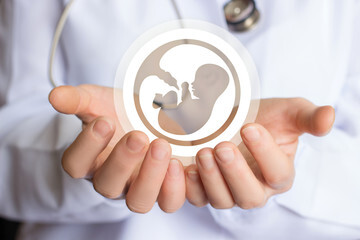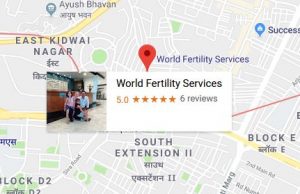In the field of cancer treatment, until very recently, the goal of the medical fraternity was just to save the patient from the deadly disease. Concerns about preserving their fertility took a backseat. In today’s day and age however, with enhanced treatment modalities and better survival expectations, it is necessary to address the risk of infertility among these patients following therapy.
The risk of infertility
The risk of infertility depends on the type of cancer that a patient is suffering from and the specific treatment that is given to them. Various types of cancer and their treatments – including chemotherapy, surgery, radiation therapy, bone marrow or stem cell transplants, and targeted and biologic (immune) therapies- can hamper a patient’s fertility in different ways.
These are some of the fertility preservation techniques that are available to female cancer patients.
1. Egg freezing
Egg (oocyte) freezing or oocyte cryopreservation is an established method of fertility preservation in women. It is particularly beneficial for women who don’t have a partner yet. For egg freezing, mature eggs are removed and then frozen before being fertilised by sperm. This process is also referred to as egg banking. When the woman is ready to have a child, the eggs can be thawed, fertilised and implanted in the uterus. Collecting the eggs typically takes several weeks. Hormones are used to mature several eggs at one go. In most women, this involves starting the hormone shots three days before their menstrual cycle begins and continuing them for two or three weeks, until many eggs have matured (usually about 12 eggs in a woman under the age of 35) after which the eggs are collected. The eggs are fertilised in a laboratory and then frozen and stored.
However, some female cancer patients are unable to follow the schedule of hormone shots as mentioned above. These include breast cancer patients, who face the risk of their tumours growing due to the high levels of estrogen caused by the hormone shots, and women who are affected with fast-growing cancers and cannot afford to wait for a few weeks to begin treatment. The option given to these women is to follow the natural cycle of the maturing egg. The other option for breast cancer patients is to take drugs such as tamoxifen or aromatase inhibitors, which are administered along with the hormone stimulation process to prevent the estrogen from helping the cancer cells grow.
2. Embryo freezing
The most common and successful method of preserving a woman’s fertility is embryo freezing or embryo cryopreservation. In this procedure, mature eggs are removed from the woman’s ovaries and then fertilised in the lab. This process is called in vitro fertilization (IVF). The embryos are then frozen so that they can be used after the cancer treatment. This option is recommended to female patients who have a partner and wish to conceive later.
The process of collecting the eggs for embryo freezing is almost the same as that followed in egg freezing. Once the eggs are collected, they are then fertilised, frozen and stored. One egg produces a single embryo at best. Thus, a woman’s chances of a successful pregnancy are better if several embryos are stored. Hormones are generally used to ripen several eggs at the same time. The hormone shots are given at a similar time period as egg freezing and the limitations that apply to it are also the same.
3. Donor eggs
A woman with a healthy uterus and who is able to maintain a pregnancy can undergo IVF with donor eggs and the sperm of a partner or donor. The donated eggs come from women who have volunteered to undergo a cycle of hormone stimulation and have their eggs collected. It is essential to screen the egg donors carefully to rule out the possibility of any sexually transmitted diseases and genetic illnesses. Carefully timing the hormone treatment, which is done to prepare the uterus lining, with the removal of eggs from the donor and the fertilisation determines the success of the egg donation procedure.
Egg donation is considered to be a successful treatment for women who can no longer produce healthy eggs. The entire process, right from the donation of eggs to the fertilisation and implantation in the uterus, usually takes a time period of six to eight weeks per cycle. The possibility of having twins or triplets is a major health risk for cancer survivors. Thus, to reduce this risk, only one or two embryos are transferred into the uterus at a time and the extras are frozen for a later cycle.
4. Donor embryos
Any female cancer patient who has a healthy uterus and is able to sustain a pregnancy can opt for IVF with donor embryos. Embryo donations are usually done by couples who have undergone assisted reproductive technology and have extra frozen embryos. In some cases, if the couple decides not to use those frozen embryos, they decide to donate them. Most women using this procedure must get hormone treatments to prepare the uterus lining. After it is thawed, the embryo is transferred to the woman’s uterus for development.
Managing fertility in young girls and teenagers with cancer
Fertility preservation can be more worrisome if the patient is a minor. The child’s parents usually undergo so much emotional turmoil that they fail to think beyond their child’s treatment. However, four out of five children who are treated for cancer live a long life and it is the responsibility of the medical practitioners to see that their fertility is preserved. The child and their parents require proper counselling before the onset of the treatment.
Options before puberty:
Although studies are being done, there currently aren’t many options available for children before puberty, since girls do not produce mature eggs until they reach puberty. The only possible option before puberty is ovarian tissue freezing, a procedure that is still in the experimental stages. In this procedure, all or part of one ovary is removed through a laparoscopy. The ovarian tissue is cut into small strips and then those strips are frozen and stored for future use. After the cancer treatment is over, the ovarian tissue is thawed and positioned close to the fallopian tubes, or in another part of the body, like the abdomen or the forearm. Once the transplanted tissue begins functioning, the eggs are collected and fertilised in the lab.
In some cases wherein no fertility preservation measures have been adopted, girls do go through puberty and start getting their periods after their cancer treatment. This however, does not indicate that they are fertile. Their hormone levels need to be checked to determine this. If possible, mature eggs or embryos should be frozen at that point to preserve their fertility in case of early menopause.
Source : http://goo.gl/3TlBPJ



 WhatsApp us
WhatsApp us